Value Lines – Where do I Stand?

This strategy is a blend of Bend the Line and Philosophical Chairs that has been adapted to promote team building and exploration of the deeper reasoning underlying diverse views. Students are given a provocative statement or claim and must decide to what degree they agree or disagree with it…
SOAPSTone Analysis: Essay Planning
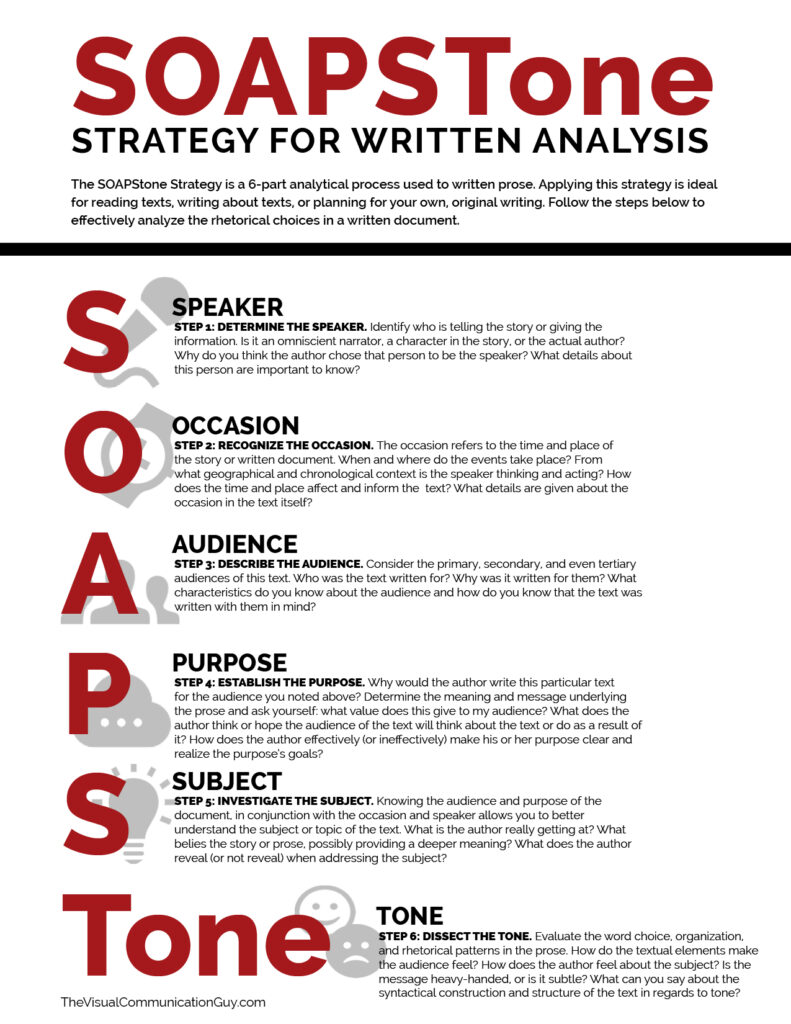
Good composition, whether written, spoken, or drawn, is carefully planned. This composition has integral parts that work together in a complex and subtle arrangement to produce meaning. SOAPSTone provides a concrete strategy to help students identify and use these central components as a basis for their own writing…
Forced Choice Partners (Would You Rather…?)
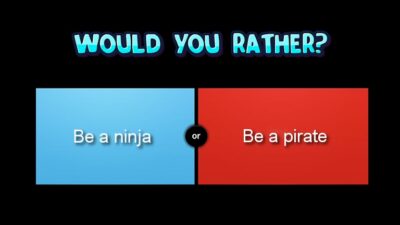
This activity can be used as an icebreaker or as a way to move students into pairs or small groups for content-related discussion. The teacher asks (or projects) a question on a light or funny topic that forces students to select one of two options…
Infographics Project

A good infographic can distill a concept so clearly. Take a hugely complex issue and boil it down to a beautiful display of the most important stats, facts, quotations, and images. Creating an infographic is the work of an artist, a writer, a researcher, and a critical thinker. It is an ideal medium for our students…
Discussion Warm-Ups
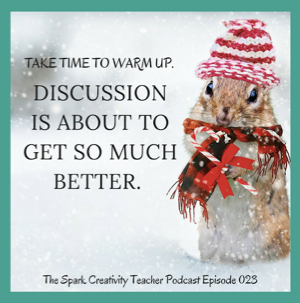
Most students just don’t respond well to walking into class and kicking off a discussion cold-turkey. When you ask a question first thing, silence and awkward eye contact avoidance is most likely all you will get…
Teacher Clarity
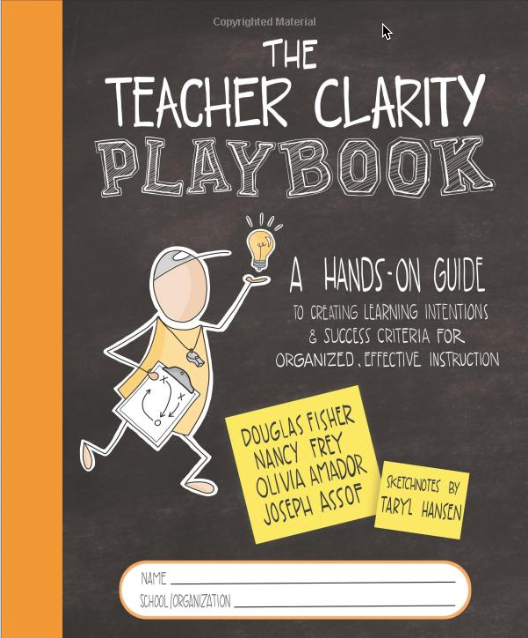
Teacher clarity is a measure of the clarity of communication between teachers and students in both directions. It can be described across four dimensions: Clarity of Organization, Clarity of Explanation,
Clarity of Examples and Guided Practice, and Clarity of Assessment.
Getting Started with Genius Hour

Do you find yourself searching for that one project that would truly engage your students? That would empower them to explore their passions? Do you sometimes feel that despite the many ways you are trying to creatively engage them, you just can’t reach everyone? Enter, genius hour. 20% time. Passion projects…
Sketchnoting
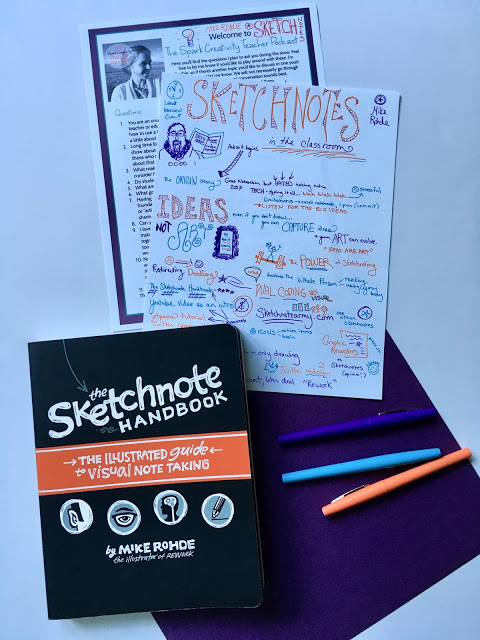
Sketchnotes are like one-pagers that you create on the fly, making your choices rapidly as you process information and get what really matters down onto your notes through a combination of pictures and words…
One-Pagers for the Art-Phobic
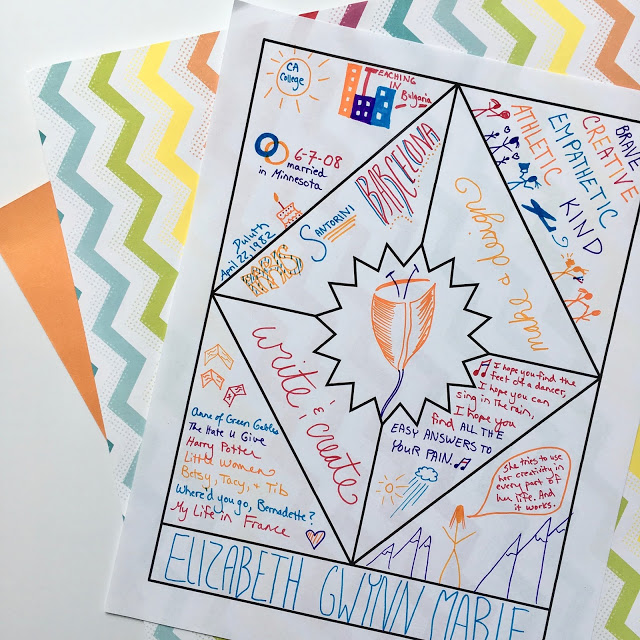
One-pagers are becoming increasingly popular as a way to help students process what they have read in one powerful activity. Like sketchnotes, they combine visuals with text to make ideas come alive in students’ minds and memories…
Pop-Up Debates
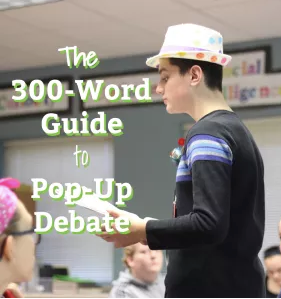
Pop-up Debate is a method for managing and facilitating in-class debates; it is easily modifiable for other speaking scenarios, such as discussions or toasts.
Students use assigned text(s), logic, and/or course content to respond to a debatable prompt and their peers’ arguments using the rules below. Every student speaks 1+ times, depending on time constraints. These limits are set by the teacher. To speak, students simply “pop up” at their desks and talk. First person to speak has the floor. When multiple students pop up, teach them to politely yield the floor. Argument is a collaborative endeavor, and collaboration isn’t a pointed finger and, “Sit down, I was up first.”
Is That Higher-Order Task Really Higher-Order?
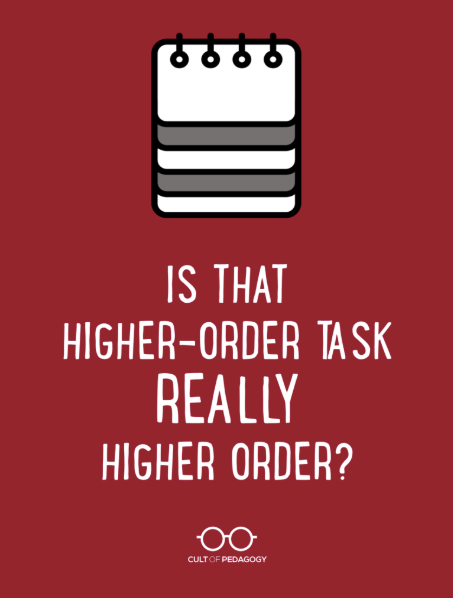
It’s kind of a given that most teachers want their students to be doing rigorous, challenging work. Ask any teacher, “Is it your goal to simply have students regurgitate facts in your class?” and every time, the answer will probably be no. And yet, that exact thing is happening more often than we realize. It’s not for lack of trying: For years, teachers have consulted their Bloom’s flip charts and DOK wheels to choose the verbs that are meant to represent higher levels of thinking. In a lot of cases, though, while the right verbs are being used, the tasks they represent aren’t actually on the level teachers think they are.
DOK Ceilings
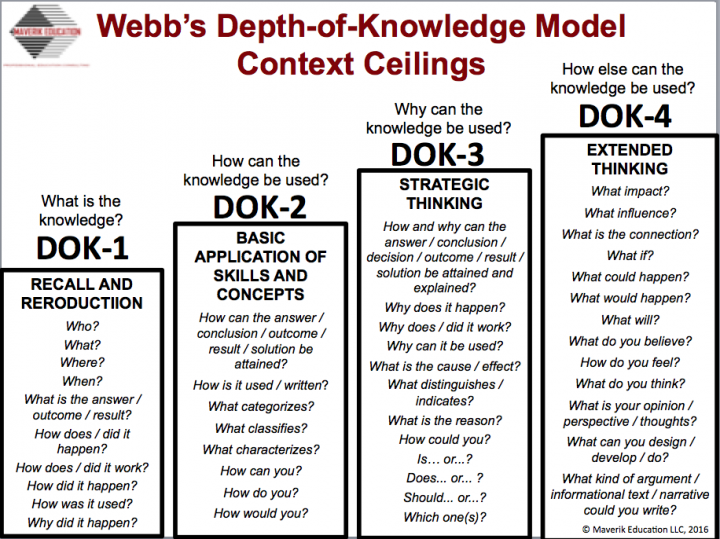
This visual, designed by Erik Francis of Maverick Education, is intended for teachers to use to plan and provide their instruction and assessment, and also for administrators to use as a guide for observing and evaluating teacher instruction and effectiveness. It is an attempt at a graphic representation that not only embodies Webb’s concept of depth of knowledge but also how Hess, Carlock, Jones, and Walkup explain how the Webb’s DOK model superimposes with Bloom’s Revised Taxonomy in their Cognitive Rigor Matrix.
DOK is NOT a Wheel!
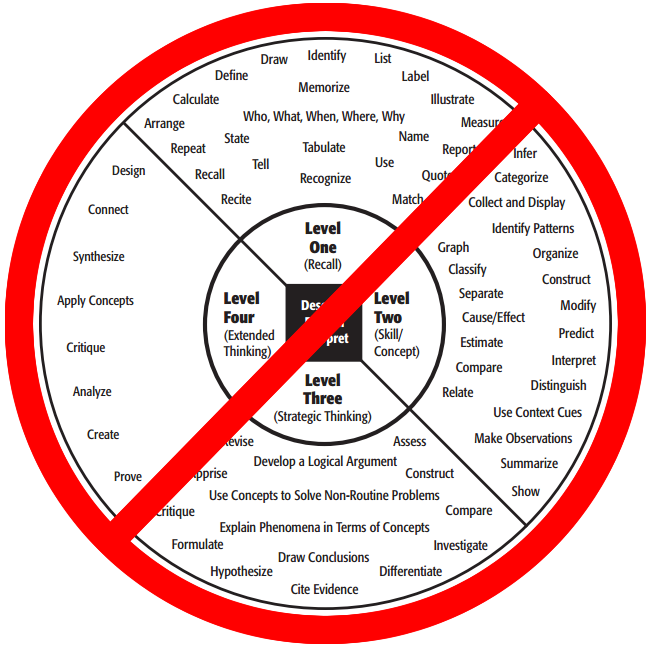
Depth of Knowledge. It’s a concept we in education have heard a lot about since our states transitioned to college and career ready standards – be it the Common Core State Standards, the Next Generation Science Standards, or whatever each individual state has decided to call their academic standards that promote college and career readiness.
It’s also one of the most misinterpreted and misrepresented concepts in education that is not only confusing but also frustrating us educators. Most of it is due to the infamous DOK Wheel.
What Does DOK Level 3 Look Like?
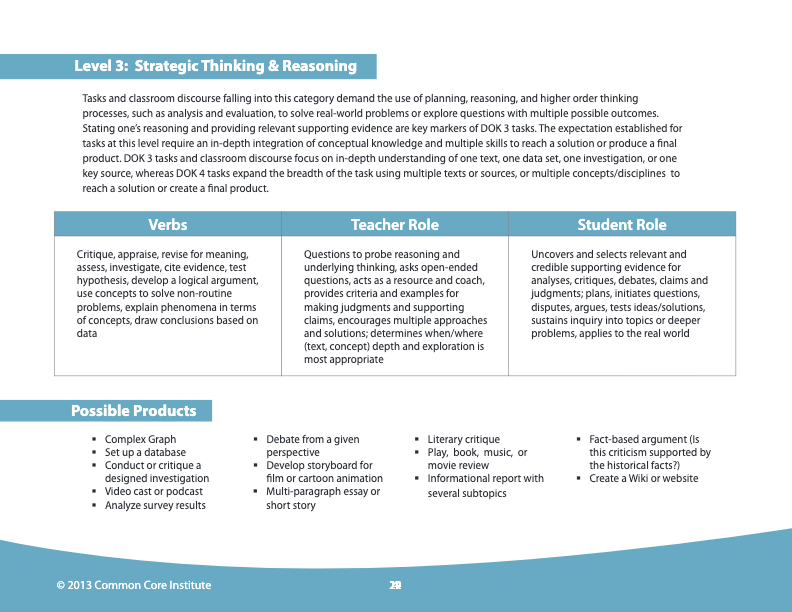
Tasks and classroom discourse falling into this category demand the use of planning, reasoning, and higher order thinking
processes, such as analysis and = evaluation, to solve real-world problems or explore questions with multiple possible outcomes. Stating one’s reasoning and providing relevant supporting evidence are key markers of DOK 3 tasks. The expectation established for tasks at this level require an in-depth integration of conceptual knowledge and multiple skills to reach a solution or produce a final product. DOK 3 tasks and classroom discourse focus on in-depth understanding of one text, one data set, one investigation, or one key source, whereas DOK 4 tasks expand the breadth of the task using multiple texts or sources, or multiple concepts/disciplines to reach a solution or create a final product.
History of Higher Order Thinking Tools
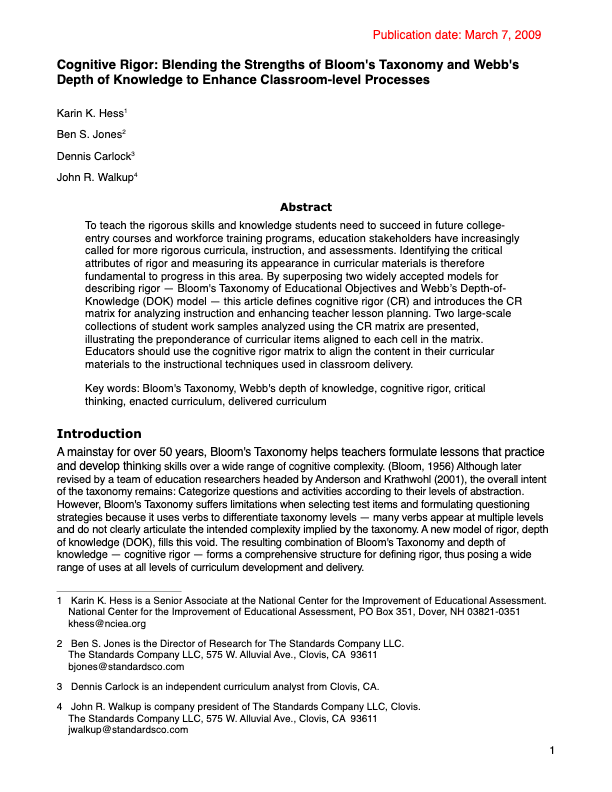
Cognitive Rigor: Blending the Strengths of Bloom’s Taxonomy and Webb’s Depth of Knowledge to Enhance Classroom-level Processes
Hess Cognitive Rigor Matrix (Classroom Walk-Through Tool)
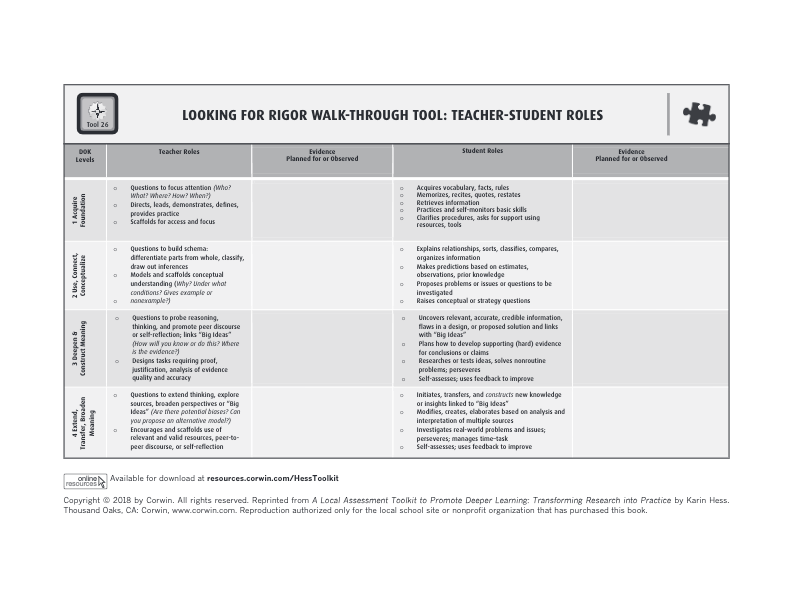
Looking for rigot walk-through tool: teacher and student roles.
Hess Cognitive Rigor Matrix (CTE)
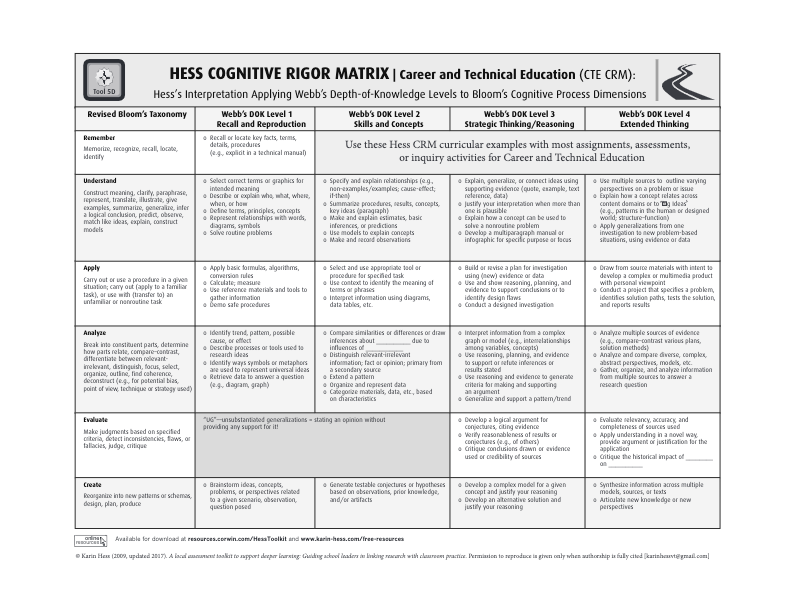
Hess’s Interpretation Applying Webb’s Depth-of-Knowledge Levels to Bloom’s Cognitive Process Dimensions in Career and Technical Education
Hess Cognitive Rigor Matrix (World Language)
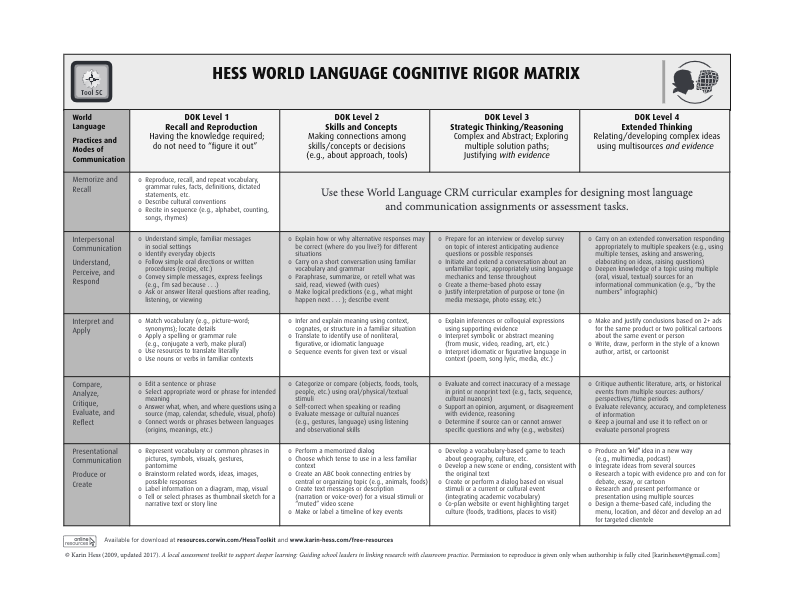
Applying Webb’s Depth-of-Knowledge Levels to Bloom’s Cognitive Process Dimensions in World Language
Hess Cognitive Rigor Matrix (Health/PE)
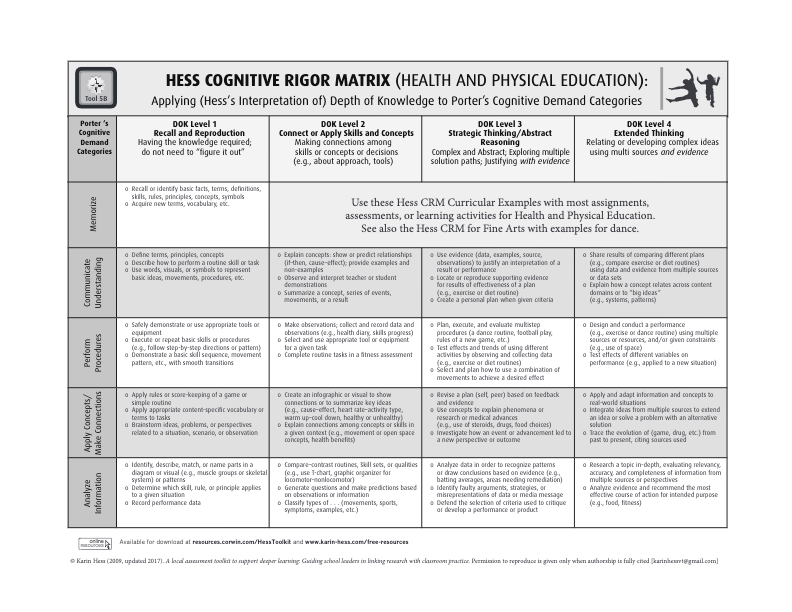
Applying (Hess’s Interpretation of) Depth of Knowledge to Porter’s Cognitive Demand Categories in Health and Physical Education
Hess Cognitive Rigor Matrix (Fine Arts)
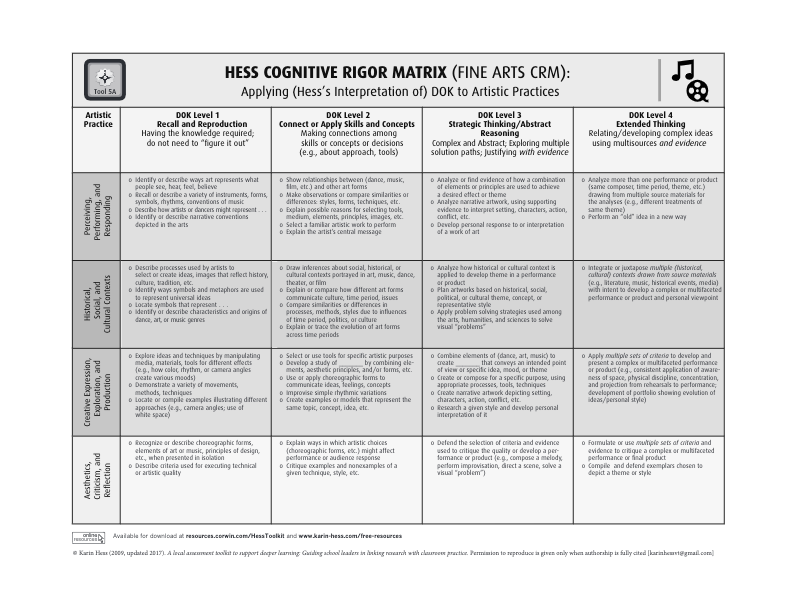
Applying (Hess’ Interpretation of) Webb’s Depth-of-Knowledge Levels to Artistic Practices
